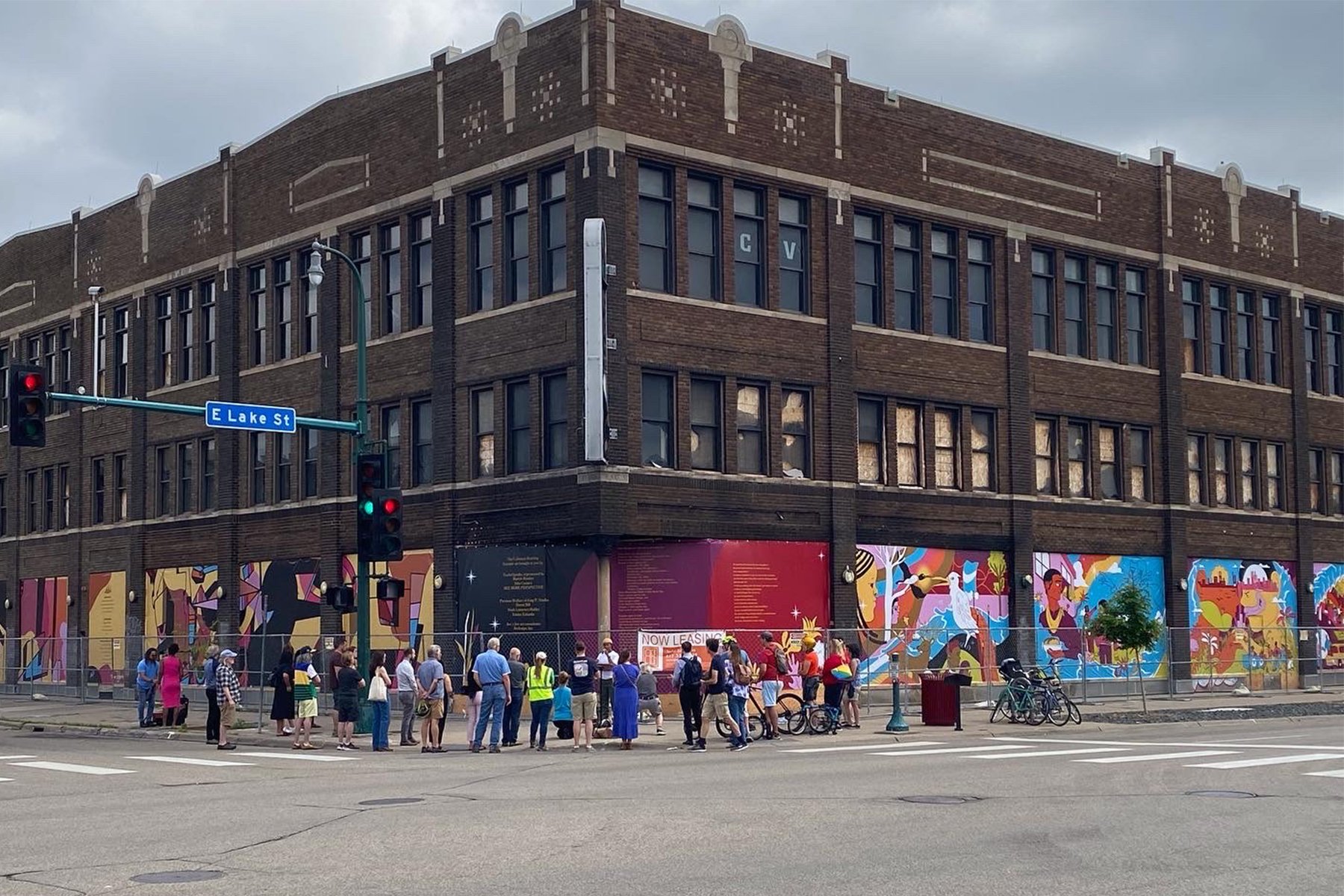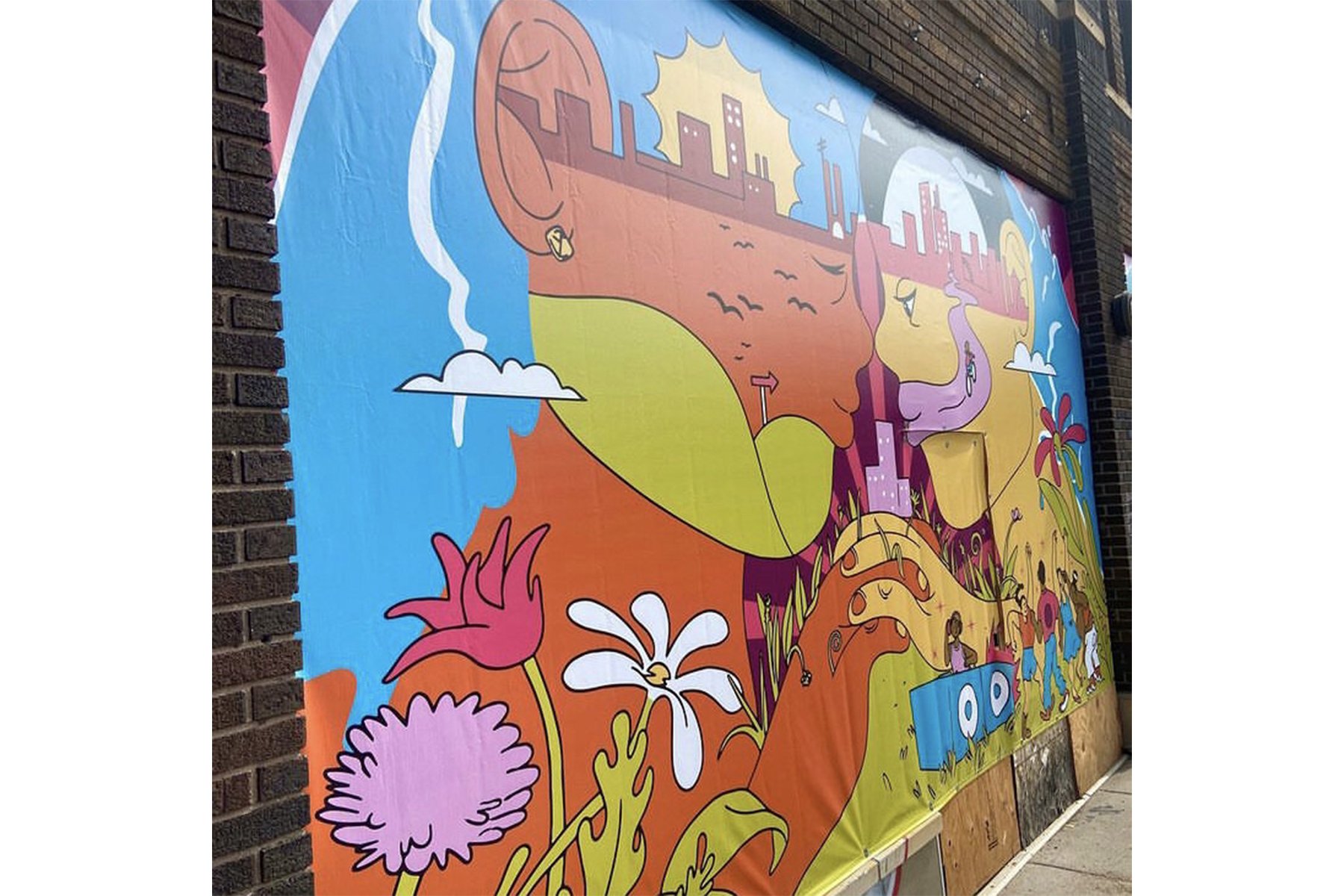Equal Efforts: Rebuilding Neighborhoods While Reshaping Downtown
In a guest editorial, leading arts consultant and administrator Robyne Robinson calls for the city of Minneapolis to reprioritize neighborhoods by learning from arts-rich community redevelopment efforts
By Robyne Robinson | February 23, 2023
Illustration by @drawnwell.
FEATURE
Publications from newspapers to design magazines are bemoaning the death of the downtown business district. Analysts predict the value of commercial real estate will drop in 2023 by half a trillion dollars. In some cities, nearly a third of downtown office space sits empty.
That’s a huge blow to cities like Minneapolis, which worked tirelessly through the 1950s to get rid of the flop houses, strip clubs, and bars lining downtown streets. That urban renewal project resulted in the city’s famous skyway system and an eight-block, tree-lined stretch of Nicollet Avenue called Nicollet Mall, the country’s first transit and pedestrian mall. In 2015, $50 million was spent to renew the mall a second time.
Some nihilists are calling the downtown downturn the “Urban Doom Loop”: A spiraling economy leads to faltering commercial real estate, corporate flight, and empty storefronts; then sales taxes plunge, resulting in cuts to public transportation and finally downtown property taxes dropping through the floor. What’s been predictable in the past was an up end to the cycle—buildings filling back up once the market dropped low enough for businesses to feel bullish again. This time, no one’s sure if anyone’s coming back.
The blame can’t all be dumped on COVID. Corporate outsourcing and the Internet did in the 9-to-5 office nearly two decades before the pandemic sent everyone home from work. And we liked staying home, taking online meetings and wearing the business world’s version of the mullet: professional on top, pajamas on the bottom. The remote working mandate was like serving ice cream before dinner. We ate it up, and then we wanted it all the time.
But Minneapolis experienced something other cities didn’t when it became the center of a national civil rights movement after the murder of George Floyd by police. Some think the thousands of people filling the streets at night to protest police brutality were a massive blow. Others also point the finger at a reduction in law enforcement combined with teenagers and drag racers taking advantage of the empty nighttime streets, jacking cars and burning rubber circles into downtown intersections.
Minneapolis administrators will need to listen and learn how to become a supportive ally for progressive communities like Longfellow that are reshaping their own economically diverse, inclusive environment.
All are critical issues, but they are the results of a bigger problem: We got too smart for our own good. The constant reinvention of the workplace throughout the 1990s finally caught up with us in 2020 and ended 30 years of a downtown business boom that attracted corporations and people in search of culture and lifestyle—theater fans, music lovers, foodies, and well-heeled hipsters in search of the chic urban address.
Cities are scrambling to reinvent their downtowns, trying to rebrand them into something they never were: Economically diverse. Pedestrian friendly. Equitable communities. Minneapolis has been looking for solutions to reenergize its downtown core for years, only to be frustrated by lawsuits over property taxes on Nicollet Mall, businesses fighting over skyway connections, and alleged predatory financiers. Now, more than $1 billion is being funneled into its downtown core for the redesign of bank buildings into skyscraper developments with apartments and restaurants. Oh yeah—and office space.
There is no quick fix. It’s going to take years to transform these Industrial Age business islands from centers of commerce into anything close to resembling a community.
But there are other Minneapolis communities that have faced the same level of urgent need from city and business leaders. These neighborhoods have taken on the philosophy of “survivance,” looking to themselves to revitalize their underserved communities. If you drive through Minneapolis’s Longfellow neighborhood, for example, and down Lake Street from Midtown to Minnehaha Avenue, you’ll see new spaces springing up everywhere, splashed with color and movement by local artists, while new businesses open and construction continues.
Arts agencies, activists, and area nonprofits have been leading the community redevelopment movement in these neighborhoods for the past two years. Forced to regroup and rebuild when the economy came to a dead stop, these advocates called for “radical accessibility.” Flexible funding started to replace traditional state grant programs to cover more people and groups quickly, with some of the money helping to create microbusinesses and jobs. Collaboration was fueled by the shared goals of refuting predictions of long-term failure after the riots and fighting corporate redevelopment of the community.
The newly installed artwork wrapping the Coliseum Building on Lake Street. Local nonprofit developer Redesign, Inc. is leading the redevelopment of the building, partnering with three local Black-owned small businesses who will be both tenants and owners. Photos by Tony Kiene.
This ongoing work pushes for what is called “spatial justice”: reconceptualizing and rebuilding public space based on a community’s history, cultures, and shared experience. Developers, entrepreneurs, and architects of color are working with community arts partners to produce some of Minneapolis’s most outstanding revitalization work, like the resurrection of the historic Coliseum Building, an 85,000-square-foot commercial building gutted during the riots. For the first phase of the renovation, completed last year, the project team partnered with Twin Cities artists to create messages of dignity and resilience for the neighborhood. That messaging now wraps the building in the form of bold, multicolored faces and uplifting poetry printed on protective vinyl that prevents vandals from damaging the fragile work inside.
Meanwhile, directly across the street, the city-owned Third Precinct building still sits untouched. The burned-out shell, fenced off from the colorful activity all around it, sends the unintended message that officials have abandoned the community. By focusing its efforts on saving downtown, the city has missed its initial opportunity to actively partner with neighborhoods to help them envision their future.
Minneapolis administrators will need to listen and learn how to become a supportive ally for progressive communities like Longfellow that are reshaping their own economically diverse, inclusive environment. They can do that by:
Increasing financial support for nonprofit neighborhood groups to give them the ability to continue their work in underserved neighborhoods.
Analyzing and understanding how multiple city agencies can engage with arts agencies to create programs that significantly increase accessibility, sustainability, and measurable improvements in city services.
Broadening the style and “spatial imagination” of developments so that people of all cultures and economic backgrounds are encouraged to take part in their community. That approach should always include artists and public art because the arts are based in creative problem solving.
Being a better working ally with the city’s 80-plus neighborhoods by helping them determine and achieve what makes their neighborhoods livable and improve their business infrastructure.
In an article I wrote in 2021 about how Minnesota arts nonprofits were adapting during the pandemic, one executive director noted how COVID only added more urgency to their organization’s need to rethink everything. Nothing was out of bounds. It was time to dream up new futures.
That’s exactly what downtown Minneapolis needs. And the answers could come from the communities that are already dreaming up their own.
Robyne Robinson is the principal and founder of fiveXfive Public Art Consultants, which curated the call for artists for the first phase of the Redesign, Inc.–led redevelopment of the Coliseum Building.





